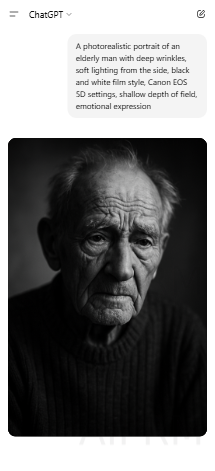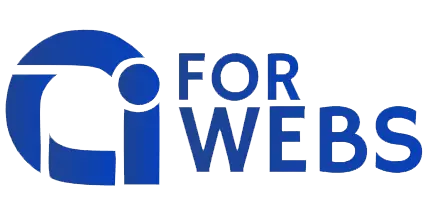
Prompt Snapshot (Quick Overview Table)
| Feature | Details |
| Keyword | AI Image to Prompt |
| Primary Function | Reverse engineer an AI-generated image into a usable text prompt |
| Who It’s For | Designers, prompt engineers, bloggers, marketers, and AI enthusiasts |
| Use Cases | Learn from visuals, remix art styles, recreate similar designs |
| Popular Tools | Clip Interrogator, Replicate, Midjourney Prompt Helper, Pixela.ai |
Copyable Prompt Block
Copy the above prompt and paste it next to the response you get from the Midjourney prompt. You will get the following probable result.
How the Prompt Works (Behind the Scenes)
- Object detection: It identifies what is in the image (e.g., a person, dog, mountain, building).
- Style analysis: Specifically, the AI checks for artistic features — lighting, shadows, color palette, depth, and tone.
- Camera metadata (if present): Some tools analyze image EXIF data or simulate photography specs.
- Contextual learning: Moreover, using trained models, it maps the visual to common prompt structures used in AI image generation.
Real Example Output
Copyable Prompt Block
Copy the above prompt and paste it next to the response you get from the Midjourney prompt. You will get the following probable result.
Imagine you found a vibrant fantasy landscape featuring “flying dragons and glowing waterfalls”. You upload it to an AI image-to-prompt tool, and it returns this:
This output is not only accurate but also editable, which in turn allows you to tweak the prompt for variations, experiments, or inspiration.
Practical Use Cases of AI Image to Prompt
The applications of this technology are broad and incredibly useful. Let’s explore a few key areas:
AI Image For Designers
- Learn prompt structures from popular images
- Remix existing artworks to create new variations
- Study art styles and techniques used in prompt-based creations
For Writers & Bloggers
- Generate imagery for blog illustrations by referencing previous designs
- Extract prompts from concept art to enhance narrative descriptions
- Use AI visuals to brainstorm story settings or character moods
AI Image For Marketers
- Understand what makes an image “clickable”
- Recreate high-performing visuals for campaigns
- Analyze and improve branding imagery through prompt testing
For Students & Educators
- Study image composition through reverse prompts
- Teach prompt engineering concepts visually
- Use as a learning aid for graphic storytelling
For Artists & Prompt Engineers
- Build prompt libraries based on visual inspiration
- Discover new styles and aesthetics by analyzing trending images
- Speed up the creative ideation process with reference-based prompts
Because of these diverse applications, AI image-to-prompt tools are becoming essential in AI art workflows.
Whether you’re a creator or marketer, this Combo of ChatGPT and Midjourney saves your hours of guesswork and delivers studio-quality visuals with just a few moments.
Tips to Use AI Image-to-Prompt Tools Better
Choose High-Quality Images for AI Image
→ Because clear, detailed images give the AI more to analyze, they result in better prompts.Use Tools Trained on Visual AI Data
→ Tools like CLIP Interrogator, Hugging Face Models, or Pixela.ai are built for prompt reverse engineering.Use the Prompt as a Starting Point of AI Image
→ Tweak and personalize the extracted prompt instead of using it as-is.Experiment with Multiple Tools
→ Alternatively, since different tools give different results; try two or more to get richer insights.Pair the Output with Your Favorite Generator of AI Image
→ Once you get the prompt, try it in Midjourney, DALL·E, or your preferred platform. By following these steps, you’ll not only recreate visuals more accurately but also learn to write better prompts on your own.Best Practices
DO:
- Upload clean, centered images for best results
- Use descriptive prompts to re-render and refine the output
- Combine reverse prompts with your own creativity
- Test across styles (realism, anime, abstract, pixel art, etc.)
DON’T:
- Expect perfect word-for-word replication
- Use low-resolution or cluttered images
- Ignore the AI’s suggested modifiers (they enhance results)
Ultimately, the key is to view this as a learning and creativity tool — not a copy-paste shortcut.
Related Prompts or Content
- [Prompt: Act as my personal assistant]
- [Prompt: Act as an AI art prompt generator.]
- [Prompt: ChatGPT Sites]
- [Prompt: Act as an expert in [your topic]]
- [Prompt: Act as an AI art prompt generator.]
- [Prompt: Act as an expert Midjourney prompt engineer. ]
Lorem ipsum dolor sit amet, consectetur adipiscing elit. Ut elit tellus, luctus nec ullamcorper mattis, pulvinar dapibus leo.
Lorem ipsum dolor sit amet, consectetur adipiscing elit. Ut elit tellus, luctus nec ullamcorper mattis, pulvinar dapibus leo.

